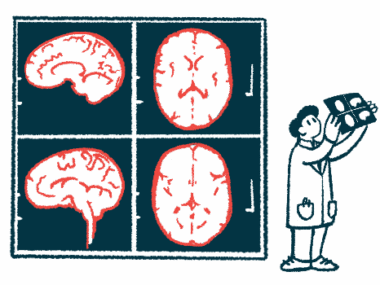Givlaari safe, effective for acute hepatic porphyria patients: Study
Treatment reduced attacks, improved life quality in expanded access program
Written by |

Givlaari (givosiran) safely led to reductions in porphyria attacks and improved the quality of life of people with acute hepatic porphyria (AHP) in Japan in an expanded access program, according to newly shared results.
The researchers noted that earlier trial data had “indicated that [Givlaari] may be an important treatment option for patients with AHP” — findings that the team suggested are substantiated by these results.
“Until the approval of [Givlaari] treatment options for AHP were limited and focused on supportive care,” the researchers wrote. “In addition to the ENVISION study, this expanded access study demonstrates the benefits and acceptable safety profile of monthly [Givlaari] administration in patients with AHP.”
That Phase 3 ENVISION trial (NCT03338816) supported Givlaari’s approval in several countries, including Japan.
This new study, titled “Efficacy and safety of givosiran in Japanese patients with acute hepatic porphyria: clinical findings from an expanded access study,” was published in the journal Scientific Reports. It was partly funded by Alnylam Pharmaceuticals, the company marketing Givlaari.
Program launched before Givlaari approval in Japan
A rare disease, porphyria is caused by a disruption in the production of heme, a molecule essential for oxygen transport in the body. It leads to the toxic accumulation of heme precursors, triggering symptoms such as pain, gastrointestinal issues, and neurological problems. These usually appear during acute attacks.
AHP, for its part, is marked by the accumulation of heme precursors in the liver — particularly porphobilinogen, or PBG, and aminolevulinic acid, known as ALA.
Givlaari is a small interfering RNA therapy designed to lower the levels of aminolevulinate synthase 1 (ALAS1), an enzyme that causes ALA and PBG levels to rise.
Here, researchers reported on data from an open-label expanded access study (JRCT2071200074), which was carried out while regulatory authorities in Japan were considering the treatment’s approval. The expanded access study provided access to Givlaari to patients with AHP who had limited or no available treatment options.
A total of 10 patients were enrolled. Three had previously participated in ENVISION, while seven had never been treated with Givlaari. Participants were predominantly women (90%) and had a mean age of 41.5.
In both groups, most patients had acute intermittent porphyria (AIP). One of the patients who had previously taken part in ENVISION had variegate porphyria (VP), and two in the other group had hereditary coproporphyria.
Before this study, all patients experienced recurrent porphyria attacks, and seven (70%) had a history of hemin treatment.
Satisfaction higher for patients continuing treatment vs. newly recruited
During the study, participants received a monthly 2.5 mg/kg dose of Givlaari. The treatment’s efficacy was assessed before treatment was initiated, or at the study’s baseline, as well as six months after its start.
Among the three participants from ENVISION, urinary ALA and PBG levels remained low during the study. In the newly treated patients, ALA and PBG levels were above the upper limit of normal and significantly decreased after six months of treatment.
Two patients who had previously participated in ENVISION experienced porphyria attacks during the study: one with AIP had one attack, and another with VP experienced seven attacks requiring two urgent healthcare visits. None of the attacks required hospitalization or treatment with hemin.
Overall, according to the researchers, “patient satisfaction ratings tended to be higher among the continuing patients from the ENVISION study than among the newly recruited ones.”
Regarding changes in quality of life related to symptoms and physical problems, 47% of patient responses in both groups indicated there were no changes, while 19% indicated an improvement. The proportion of responses suggesting an improvement was higher among those who had not previously taken part in the ENVISION trial (12.8% vs. 6.3%).
It is noteworthy that the patients from the ENVISION study received longer treatment (range, 41–45 months) and appeared to report greater benefit than the newly recruited patients who received 5 to 9 months of treatment. … These findings may indicate that long-term treatment with [Givlaari] would be beneficial in patients with AHP.
From the perspective of emotional and social aspects, 36.7% of patient responses reported no changes and 33.3% considered there was an improvement. In these domains, the proportion of responses suggesting an improvement was higher among patients in the ENVISION study than in newly treated patients (70.3% vs. 17.5%).
“It is noteworthy that the patients from the ENVISION study received longer treatment (range, 41–45 months) and appeared to report greater benefit than the newly recruited patients who received 5 to 9 months of treatment,” the researchers wrote. “These findings may indicate that long-term treatment with [Givlaari] would be beneficial in patients with AHP.”
Eight participants experienced at least one adverse event after starting treatment, and five were deemed to be related to Givlaari. All of them were mild to moderate in severity, although one patient discontinued treatment after six months due to mild hair loss.







